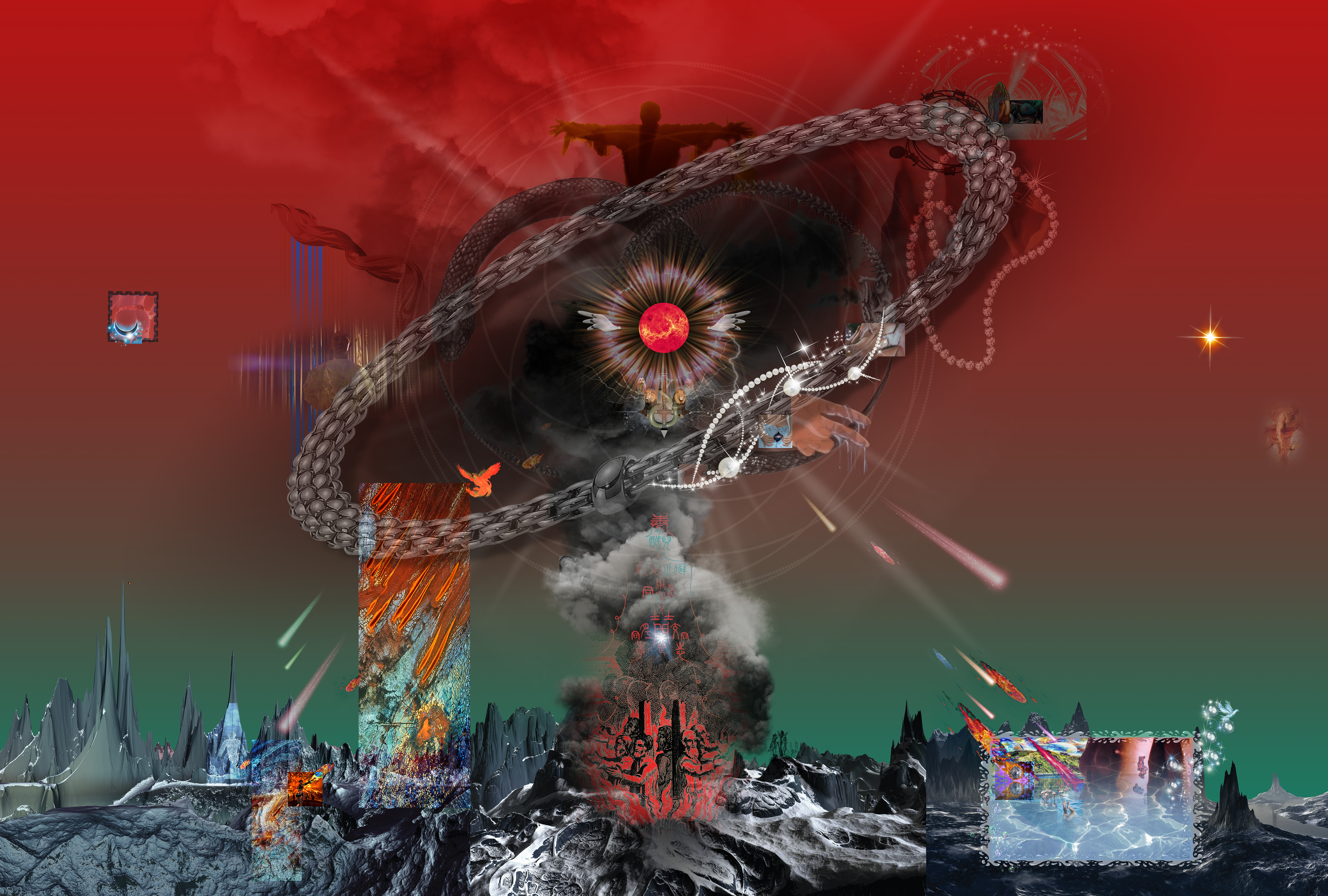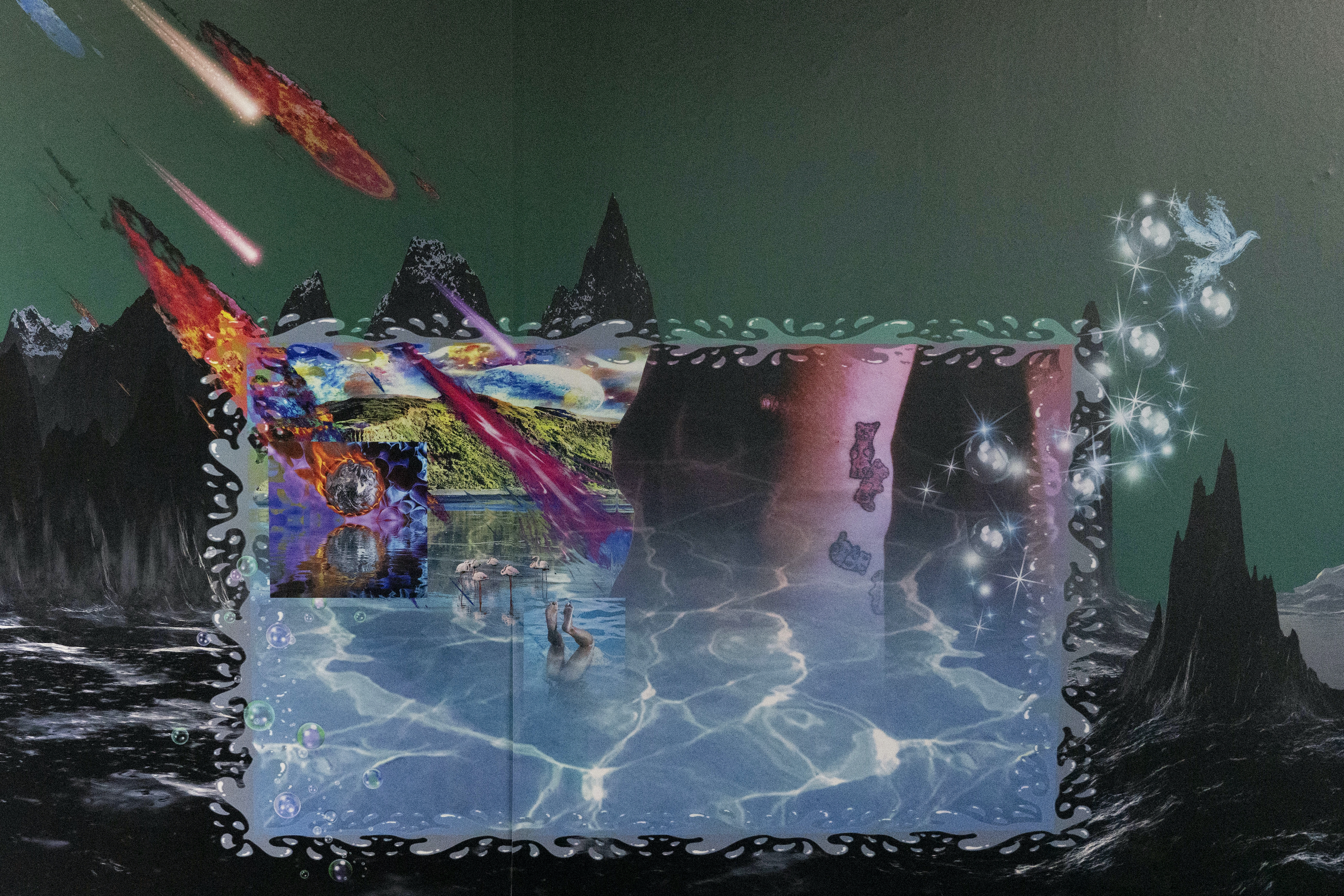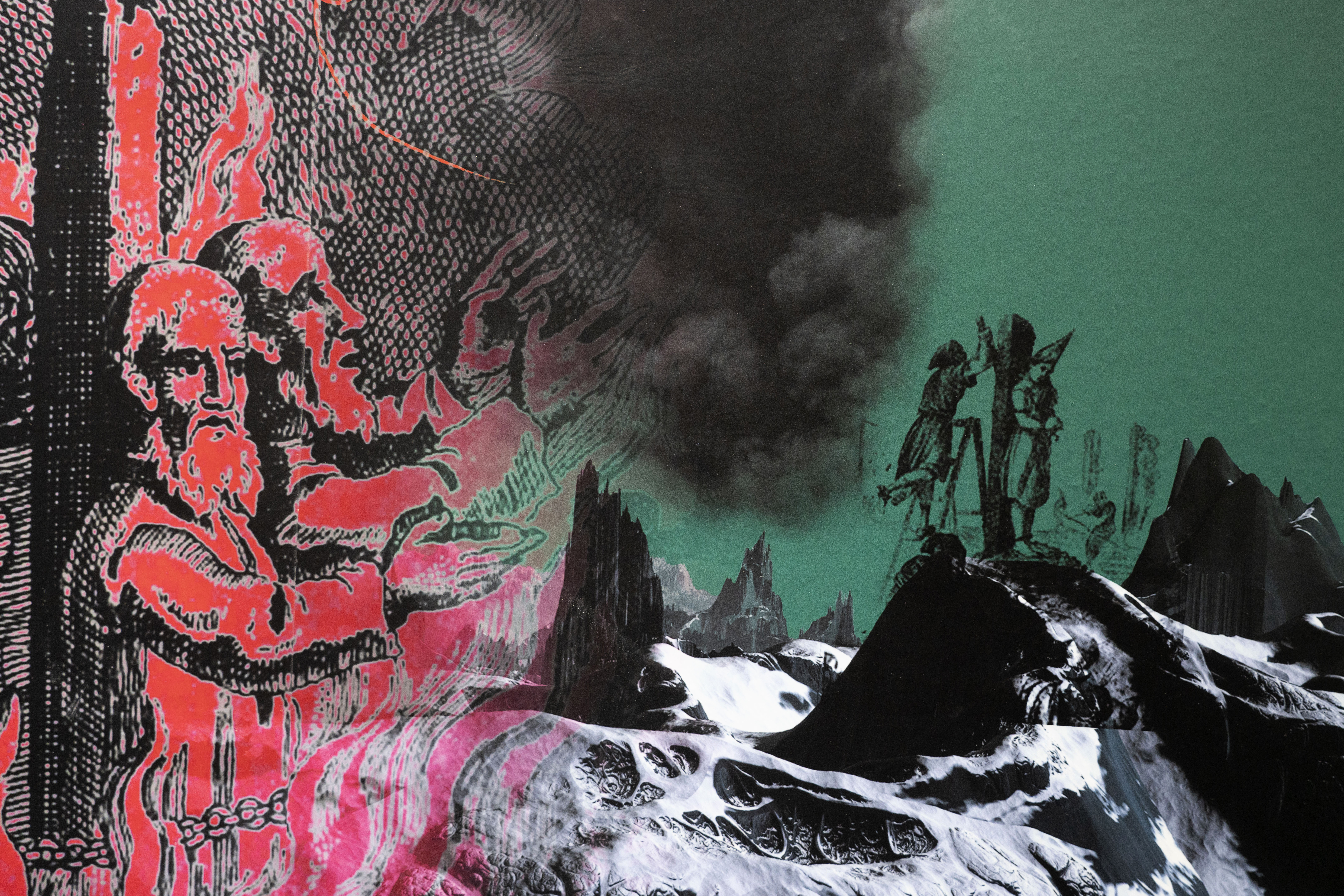Why Did Ishtar Go To The Underworld?, 2020
Supported by Arts Council KoreaExhibited at d/p, Seoul, Korea, 2020

Dancing In The Night Of Kiss, 2020, mixed media, 270x150x30. Costume design Dehan Hka Son. Commissioned by National Museum of Modern and Contemporary Art, Korea.
This Time You've Chosen A Fascinating Victim, 2019, gong jing, toys, 40x40x55.






우리의 밤이 미래가 될 때까지 ☆ Kiss of Chaos, 2020, CD & goods. The song in the single CD was commissioned by National Museum of Modern and Contemporary Art, Korea.
- from Why Did Ishtar Go to the Underworld?, written by Dew Kim
(Full Text >︎)
It is known that Dew Kim's works origin from the artist's autobiographical narrative. He recognized from an early age that the conflict between the religious environment in the process of growth and the identity as a queer is being expressed as a (Sado)masochistic impulse. As a result, he has been working as a queer artist by appropriating various religious references and recently created a new fictional identity by adopting the symbols of K-pop idols. In the exhibition space, the stage was set up with the history of Dew Kim's splendid fictional world accumulated from the founder of the anal worshipping cult to K-pop idols. However, Dew Kim's intensive reference strategy paradoxically emphasizes that his autobiographical narrative stays as the inner motive or the background of his works, and that his works are headed in a completely different direction from confession of personal experience or realist documentary.
Following the logic that led to the establishment of Anal Worshipism, a Christian worldview that suppresses sex and enforces normality, let’s give a religious context to Dew Kim's play on symbols. Simulacre “exorcise devils.” This comment by artist and critic Pierre Klossowski follows urban poetician Tanaka Jun's explanation: “It performs two functions of activating the phantasm of passions and blocking its magical power through materialization of the icon at the same time.” Klossowski claimed theological erotism as a unique Christian theology. He gave art a special status and emphasized the sexual deviation and spectacle and theatricality of violence. Whereas Bataille claimed rendering visibility to sacrifice and violence and seriousness of them, he sought humor and irony to escape the tension between theology and erotism. However, this distinctive dichotomy between religion-reality and art has risk of falling into self-deception. In the same context, as already pointed out about Dew Kim's play on symbols, an inquiry which is not about “escapist utopia” but about “how the world can be formed” can be requested. Before conceiving the world, at least, the presentation of self-desire, such as anal sex and becoming a K-pop idol, leads us to imagine erotism that deviated from pornography through his physical self-practice.
- from Controlling the arrow keys—from space to ground, written by Junghyun Kim
Dew Kim continues to question the borders between innocence and dirtiness, and sacred and secular. What kind of relationship does artists have with their works? Dew Kim continues his work on K-pop idols and shamans, taking over his previous work. Dew Kim's work Why Did Ishtar Go to the Underworld? set as a new song release booth for K-pop idol HornyHoneydew, creates a mythical and shamanic atmosphere using Ishtar/Asdarot as the background. The connection between K-pop idols and shamans raises important questions. For example, are V and Kim Taehyung (V's real name) of BTS the same person? Are HornyHoneydew and Dew Kim the same person? Also, are Kim Eulsu in the state in which a god dwells and prophesies and Kim Eulsu in the usual state same person? This question is not intended to discuss the possibilities of various egos simply saying that one person is just showing different appearances or images. Rather, it is to question the boundaries of the human body. Does the human body have clear boundaries? Our society assumes that a human is composed of one body and one mind. Therefore, if multiple egos exist in one body they are treated as a kind of mental illness, diagnosed, and treated as objects. The reason there are so many TV shows about crimes by people with multiple personality disorder is that people perceive this as a serious problem in society.
But what would happen if the work about the existence of multiple egos in one body is not defined as a thriller or something about mental illness, but as a possibility? This raises a new question. How the possibility of multiple bodies in one self, or multiple selves and bodies make us think differently about the relationship between 'I' and 'body'? Dew Kim's work allows us to contemplat this point. Dew Kim's work Why Did Ishtar Go to the Underworld?, a combination of various images, creates an interesting scene with the new song by HornyHoneydew. It is a work produced by Dew Kim, but it also looks like the body of HornyHoneydew through his album CD played in the middle of the work. For example, a CD player may look like an eye in an image of large oval chain, or it may look like the heart of a Jesus with the figure of Jesus shown as a black silhouette at the top, or it may look like a halo of a human in the talisman at the bottom. Why Did Ishtar Go to the Underworld? itself is the body of HornyHoneydew, but he is also an entity that has multiple bodies that are overlapped and dispersed, different from the existing body image. In this case, where is the boundary between HornyHoneydew's body? Again, where is the boundary between the human body, and does the relationship between me and the body really need to be in a single form?
The various norms existing in society generally assume a single body and produce various taboos based on it. We must be one body, we must live a life that conforms to heterosexual norms, and we must recognize normative desires as our own happiness. However, if the mind/ego is not single, and the body is not one, many of the existing normative orders cannot exist. Here, the dispersion of the body that fails to assimilate becomes the power to completely rebuild the possibility of the body.
- from How to question the norm through error, written by Ruin
